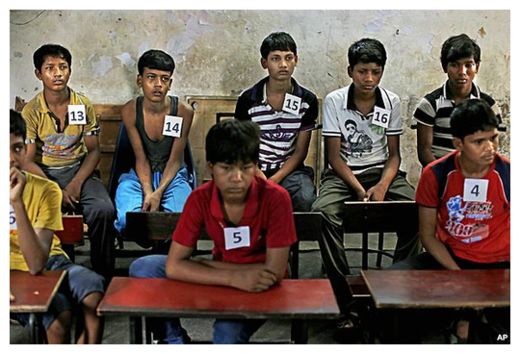
The International Labor Organization reports all regions of the world employ children as domestic laborers, often in brutal conditions. The report finds 6.5 million of the 10.5 million child domestic laborers are aged between five and 14 years. More than 70 percent are girls.
International Program on the Elimination of Child Labor Director Constance Thomas says children carry out a variety of domestic tasks such as cleaning, ironing, cooking, gardening, looking after other children, and caring for the elderly.
"We know that they are vulnerable to physical, psychological and sexual violence and abuse. They are isolated from their own families. They are hidden from the public eye by the nature of where they are working. And, they can become in a state of high dependence on the family or the people in whose household they are working. We have evidence that some do end up becoming commercially sexually exploited," said Thomas.
Thomas describes the situation of many domestic workers as a serious violation of child rights. She says the conditions under which they work are appalling, with long hours and no time for rest or leisure. She says many are exposed to toxic chemicals, carry heavy loads, and use dangerous tools like axes and knives. She says the children often are underfed, receive humiliating and degrading treatment and suffer verbal and sexual abuse.
The International Labor Organization reports overall 215 million children under age 18 work, many full-time.
In Sub-Saharan Africa, one in four children aged five to 17 work, compared to one in eight in the Asia Pacific region and one in 10 in Latin America.
Thomas says many children in Africa work in some of the worst forms of child labor, but some countries, such as Uganda, Zambia and Tanzania are making very good progress in ending some of the most hazardous types of child labor.
"We have some good examples of some great, great progress. Ghana right now has a huge program addressing child labor in agriculture, in fishing and in domestic work. But they are calling on more action because domestic work is one of those that is going to be the hardest to root out because it is hidden-very much because it is hidden," she said.
The ILO says child domestic work is not recognized as a form of child labor in many countries because of the blurred relationship with the employing family. But the ILO stresses the child is not treated like a family member. It adds the hidden nature of domestic work makes it difficult to protect the child.
The report calls for better data collection and is also pressing governments to ratify and implement two ILO Conventions that deal with the minimum age for employment and the worst forms of child labor.



Reader Comments